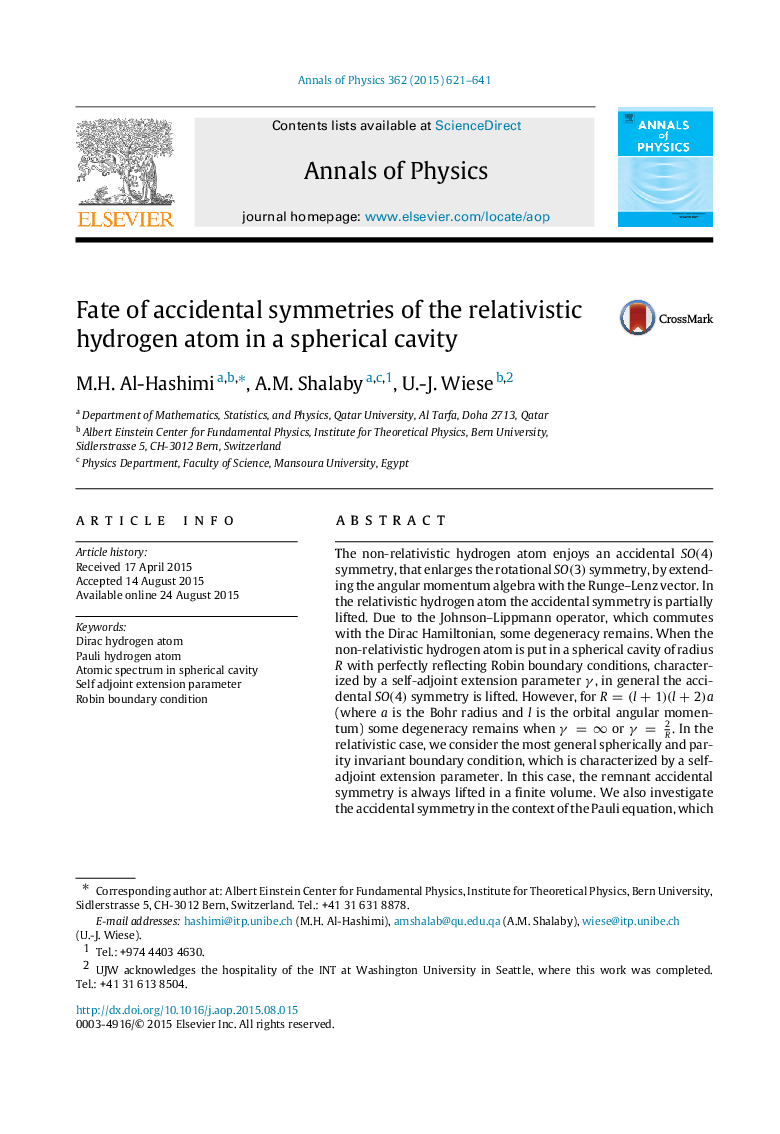| Article ID | Journal | Published Year | Pages | File Type |
|---|---|---|---|---|
| 1856002 | Annals of Physics | 2015 | 21 Pages |
The non-relativistic hydrogen atom enjoys an accidental SO(4)SO(4) symmetry, that enlarges the rotational SO(3)SO(3) symmetry, by extending the angular momentum algebra with the Runge–Lenz vector. In the relativistic hydrogen atom the accidental symmetry is partially lifted. Due to the Johnson–Lippmann operator, which commutes with the Dirac Hamiltonian, some degeneracy remains. When the non-relativistic hydrogen atom is put in a spherical cavity of radius RR with perfectly reflecting Robin boundary conditions, characterized by a self-adjoint extension parameter γγ, in general the accidental SO(4)SO(4) symmetry is lifted. However, for R=(l+1)(l+2)aR=(l+1)(l+2)a (where aa is the Bohr radius and ll is the orbital angular momentum) some degeneracy remains when γ=∞γ=∞ or γ=2R. In the relativistic case, we consider the most general spherically and parity invariant boundary condition, which is characterized by a self-adjoint extension parameter. In this case, the remnant accidental symmetry is always lifted in a finite volume. We also investigate the accidental symmetry in the context of the Pauli equation, which sheds light on the proper non-relativistic treatment including spin. In that case, again some degeneracy remains for specific values of RR and γγ.
